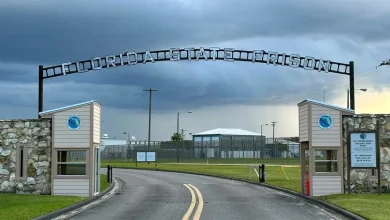When does the Orionid meteor shower peak? Here’s what to know.

A reason to look up: October astronomy events
October’s night skies will offer a dynamic array of astronomical phenomena, including high-visibility planetary alignments and an active meteor shower resulting from Earth’s passage through cometary debris.
The Orionid meteor shower will soon peak, and conditions could allow for a night full of shooting stars.
Folks who missed the Draconid meteor shower will have another chance to see meteors shoot across the sky when the Orionid meteor shower, which will go on until Nov. 22, peaks on Oct. 21, the same night as the new moon, according to NASA.
“This meteor shower happens when Earth travels through the debris trailing behind Halley’s Comet, and it burns up in our atmosphere.” NASA’s Jet Propulsion Laboratory stated in a YouTube video titled “What’s Up: October 2025 Skywatching Tips from NASA.”
The new moon raises the chances of star gazers being able to see fireballs, which are brighter than normal meteors, according to NASA. At its peak, stargazers can spot around 20 meteors an hour streaking across the night sky.
When does the Orionid meteor shower peak?
The meteor shower will peak on Tuesday, Oct. 21.
When is the best time to see the meteor shower?
The best time to see the meteor shower is just before midnight on the night it peaks, until around 2 a.m., according to NASA.
However, the shower’s activity will increase the closer we get to its peak, so stargazers who can’t make it out to a location to see it can plan to stargaze the weekend before.
Where should you face to see the Orionid meteor shower?
The Orionid meteor shower is often seen near the Orion constellation, so look towards the southeast sky, as meteors can look like they’re coming from that direction, according to NASA.
But, stargazers might be able to catch a glimpse of the meteors coming from any direction in the sky.
Do you need any equipment to see the Orionid meteor shower?
No, onlookers will not need any equipment to see the meteor shower. In fact, you don’t even need a telescope or binoculars, according to NASA.
A telescope can limit your view of the night sky. You want to ensure you have a clear view of the entire night sky, especially since multiple showers are occurring simultaneously, and a falling star can come from any direction.
If you do decide to try to watch the Orionid meteor shower, make sure you do the following:
- Check the weather and cloud coverage in your area to make sure conditions are optimal to view the meteor shower
- Find a dark location away from light pollution
- Give your eyes 20 to 30 minutes to adjust to the dark
- Avoid looking at phones or bright lights
To be as comfortable as possible, dress appropriately for the weather, use bug spray, and bring a blanket, sleeping bag or a reclining chair to lie down on.
Julia is a Trending reporter for USA TODAY and covers scientific studies and trending news. Connect with her on LinkedIn, X, Instagram, and TikTok: @juliamariegz, or email her at jgomez@gannett.com





